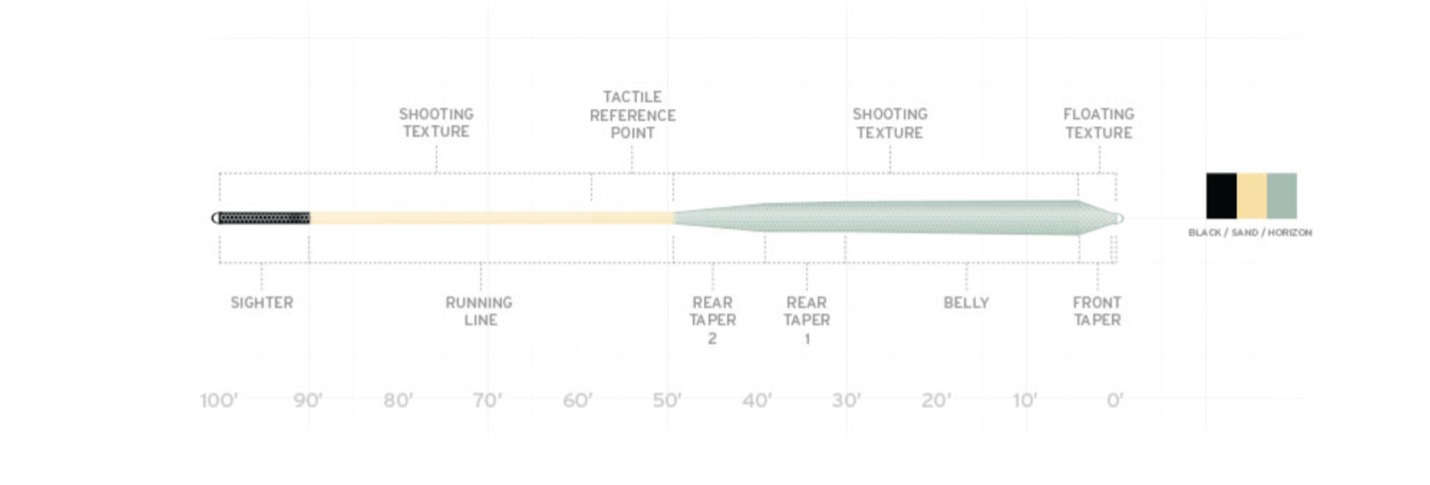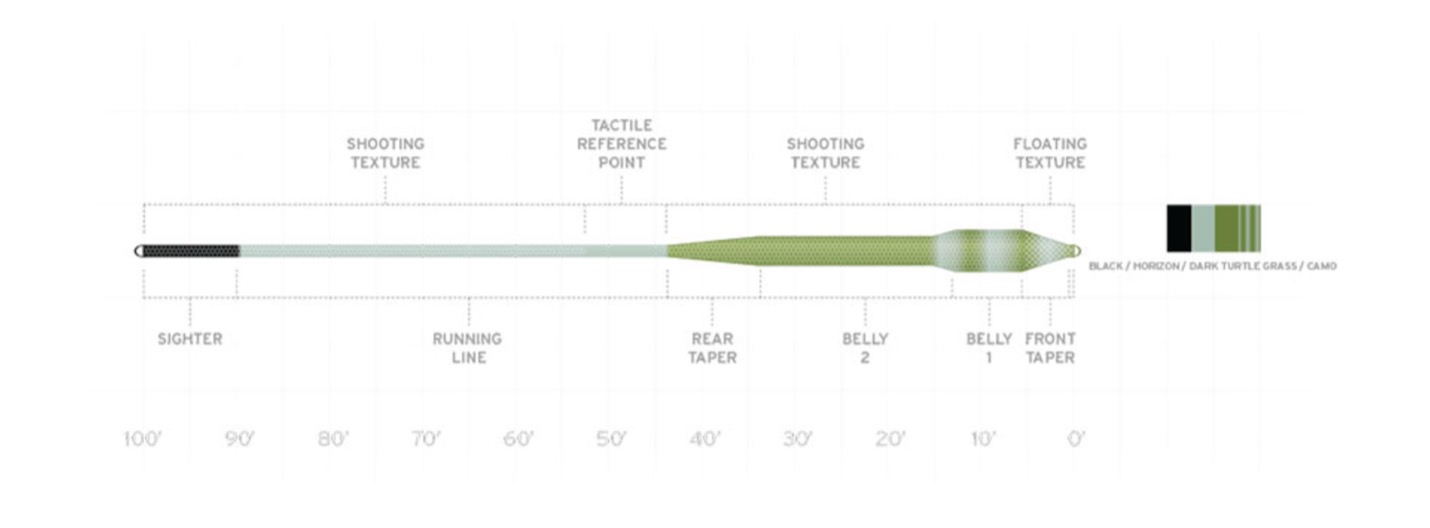 Jonas Magnusson
Jonas MagnussonI looked at Scientific Anglers’ floating lines for saltwater, and I found they offer six different fly lines. Which one is right for you?
Generally, saltwater flies are big/heavy with considerable drag. Forget delicate presentation fly lines. You will need a heavy line and it helps that the mass profile is pushed forward if you want to turn over those big/heavy flies.
However, the exceptions to this rule are the bonefish flies. We could easily throw them with a four-weight line but because of the wind on the flats, we opt for heavier lines. Therefore, the bonefish fly line is designed true to weight and the mass is just slightly pushed forward, and that’s all we need to ensure the turnover of a classic bonefish fly. If you ever need a gentle presentation in saltwater that would be casting to a bonefish in shallow water. By paying attention to the delivery the bonefish line can be cast and turned over very delicately. If the wind becomes very troublesome I would recommend a fly line with a more aggressive head for instance the Grand Slam.
The heavier the fly the more mass you need and pushing the mass profile forward helps to turn over that fly. So, the mass of the fly dictates the design of the fly line.
There are some light very air-resistant flies, and they require powerful lines to drive them too.
These lines are built for a hot climate and that means they are designed on a stiffer core than the braided multifilament core fly lines for cold water. The coatings are also harder to resist softening in the heat. Salt water is more buoyant than fresh water. Therefore, the saltwater lines can be made more dense than freshwater lines and still float. The advantage is that they can now be made with smaller diameters and that reduces wind resistance.
So, now we understand why SA offers these different lines – these lines all have different mass profiles and are all designed for heavy flies (except Bonefish).
What to look for?
Line weight – note if the line is overweighted. Some lines are 2 sizes heavy.
Head length – saltwater lines don’t have long heads – the longest is Amplitude Infinity at 48’. The saltwater species are not stationary, and you must be quick to load the rod and shoot the line. Saltwater lines generally have shorter heavier heads because you need to be able to cast big/heavy flies quickly to a moving fish.
The head‘s mass profile – Is the mass in the head evenly spread over its length or is the mass pushed forward?
Front taper –Short front taper has a more aggressive turnover.
SA´s very best lines are called Amplitude and they are offered both in textured versions and smooth versions depending on our preference. Textured lines shoot and haul better (less contact of line to guides), they last longer and tangle less. I prefer textured lines. Some anglers like textured lines and some can’t stand the rasping sound they make in the rod guides, your choice.
Amplitude Bonefish. This line is true to weight (the only one of these lines) and comes in sizes #6-9. The head is 35 to 42 ft. long depending on line size with a relatively delicate front taper. The mass profile – its mass is pushed forward a bit so it will turn over well.

This line is great for the standard bonefish flies. This line is designed – yes you guessed it – for bonefish. This is my go-to bonefish fly line. I like it so much and it casts so well that I use it for all kinds of fish if the fly isn’t too heavy. I don’t think the line minds.
Amplitude Infinity Salt. This line is half a size heavy and comes in sizes #7-12. Of the lines considered this line has the longest head 48-53’ depending on size.
The mass profile is gently pushed forward. This line will turn over heavier flies than Amplitude Bonefish if the terminal tips are equal.

The Infinity Salt is heavier than the Bonefish line and can turn over a bigger/heavier fly.
This line is for good casters who can carry a long line and is best for moderate-sized flies, not those that are very heavy or wind-resistant.
If I only had one saltwater floater this line would be my choice.
Amplitude Grand Slam. This line is ¾ size heavy and comes in sizes #6-12. The head is 40’. The mass is aggressively pushed forward. One-third of the head is rear taper which means there must be more weight in the front two-thirds to meet the weight standard. The very short front taper also moves the mass forward.

The Grand Slam is heavier than the Infinity line and thus can move heavier flies. This line is made for quick casts with big flies, and wind of course. This line would be ideal for a permit.
Amplitude Tropical Jungle Titan. This one is two sizes heavy and comes in sizes #6-12. The head is 43’ and the front taper is around 5’. The mass is aggressively pushed forward this profile will turn over bigger flies than the first three, because the line is heavier, and the mass is pushed more forward.

The Tropical Jungle Titan fly line is aggressively designed for the heaviest and most air resistant flies. This is not a line designed for a specific species as such.
Amplitude Tarpon. Two sizes heavy fly line and comes in sizes #10-12. The head is 36’ and the front taper is around 6’. The mass is pushed forward making for a good turnover.

The Tarpon fly line is designed to cast typical tarpon flies. Because of its short head, it is also designed to be cast quickly. This ticks the boxes for a good line for tarpon.
Amplitude Big Water Taper. One size heavy and comes in sizes #11-12. The head is 32,5’ and the front taper is 5. The mass is pushed forward, and the front taper is short, and this line will aggressively turn over heavy stuff. This line is built on a whooping 100-lb. core.

This line with its 100-lb. break strength is designed for the really big fish – tuna – billfish – you get the picture.
To emphasize and reiterate the guiding principles.
- Your choice of line is dependent on your casting abilities. If a beginner then opt for shorter head fly lines. When a good caster then move up to longer head lines.
- As your flies get bigger and/or more air-resistant more mass is needed to move them, and it helps when that mass is pushed forward in the head of the line.
- There always is a wind to deal with in the salt and as it gets worse you need more mass in your line to deal with it.
You don’t necessarily need a Redfish line to catch a redfish. I catch reds on my bonefish lines. The red does not know, and the line does not care. You need a fly line that can deal with the mass and drag of your fly in the prevailing wind you find yourself.
Technical consultant: Bruce Richards

